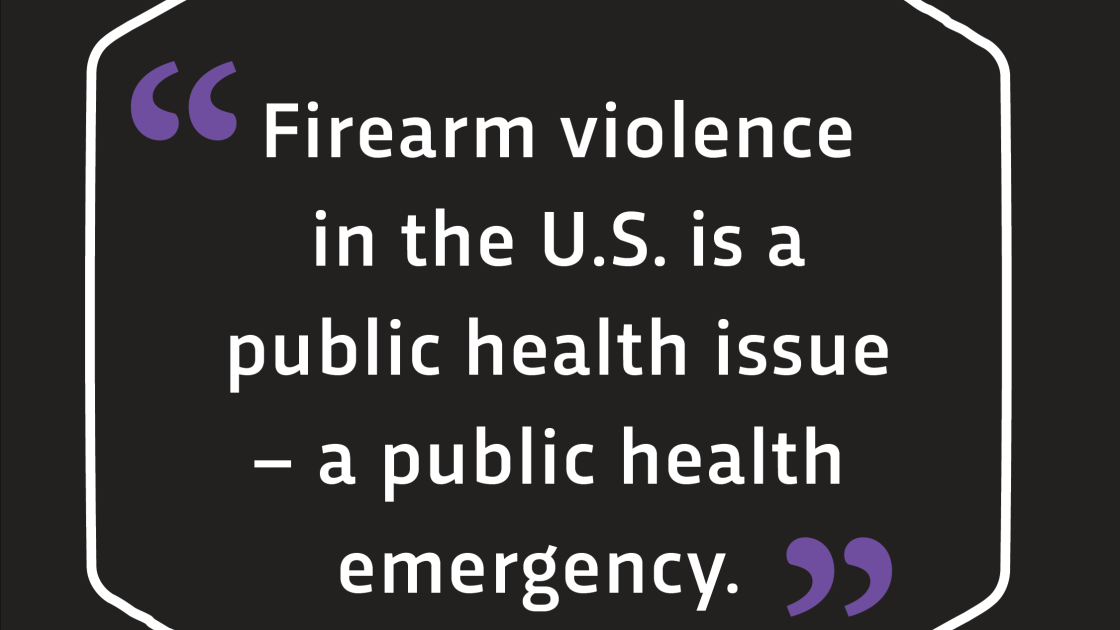
Jerry Kruse speaks about firearm violence in US
COVID-19 has again shined its bright light on a public health emergency. The April 28 issue of JAMA Network Open contains an analysis of recent firearm violence in the U.S. During the first 12 months of the pandemic, there were approximately 4400 excess deaths and 10,200 excess non-fatal injuries due to firearm violence compared to the previous 12-month period.
Predictable prophetic reality then shook us to the core. On May 14, in Buffalo, a planned racial hate crime claimed the lives of 10 people. On May 24, 19 children and two teachers were killed in Uvalde, Texas, by an 18-year-old gunman. In both instances, automatic assault weapons were used.
The generation of young Americans, millennials, if you will, are well versed in evidence-based analysis. Our medical students are part of this generation. They crave evidence and have evidence at their fingertips, and they use it appropriately. We have abundant evidence about the epidemiology of firearm violence in the U.S. and the policies that will prevent it. Our nation should take a cue from the millennials and use this evidence.
Here is the evidence about firearm violence:
- 5% of the world’s population lives in the U.S., yet 45% of civilian-owned firearms are in the U.S.
- The number of civilian-owned firearms per capita in the U.S. is, by far, the highest in the world. There are 120 civilian-owned firearms per 100 people in the U.S. – more than one for every person in our nation. Among nations with populations over 10,000,000 people, Yemen is second (52), followed by Canada (34), Pakistan (22) and Portugal (21).
- Using annual murder rate per capita in cities with populations over 250,000 as the criterion, 43 of the most dangerous cities in the world are in Latin America. When those cities are excluded, the most dangerous city is Cape Town, South Africa (66 murders per 100,000 people per year), followed by St. Louis, Missouri (60), Baltimore, Maryland (50), Mandela Bay, South Africa (39), Detroit, Michigan (39), Durban, South Africa (38) and New Orleans, Louisiana (37). No cities from Asia, the Middle East or Europe appear on this list. Nor does Chicago
- Fatal school shooting events are almost exclusive to the U.S. From 2009 to 2018, there were 288 unique fatal school shooting events in the U.S. Next in line is Mexico (8), followed by South Africa (6), India (5), Pakistan (4), Canada (2), France (2), Germany (1), Japan (0), UK (0).
- For nations, regions and states, there is a direct relationship between number of civilian-owned firearms and murders, accidental deaths and suicide by firearms. Homes with firearms have more murders, more accidental deaths and more suicides than homes without firearms. These excess deaths in the home swamp any theoretical protective effect of firearms in the home.
- Less than 5% of mass shootings are perpetrated by people with diagnosed mental illness. On the other hand, more than half of people who die by suicide have a diagnosed mental illness. There is no evidence that mental illness is more prevalent in the U.S. than in many other nations whose death rate due to firearm violence is a fraction that of the U.S.
More than 40,000 people die of firearms annually in the U.S., and firearm violence is the leading cause of death for Americans age 17 years and under. This is a public health emergency of monumental proportions. The underlying factors are historic, strong, and complex.
Where there are more guns, there are more mass shootings and deaths from firearms. Gun availability is a risk factor for gun violence. The 1994-2004 Federal Assault Weapon Ban worked.
Deaths from gun violence are preventable. Much of the evidence for the prevention of firearm violence is found in a report from the National Academies of Science and from RAND’s The Science of Gun Policy.
Here is the evidence for interventions proven effective to reduce firearm violence in the U.S.:
- Ban from civilian possession all automatic and assault weapons, and all high capacity magazines.
- Reform gun sales and purchase laws.
- Perform universal background checks for all firearm purchases.
- Prohibit the purchase of firearms by people with a history of domestic violence and with some forms of mental illness.
- Raise the minimum age for purchase of firearms to 21.
- Enhance gun safety by the enactment of child-access prevention laws and safe storage laws.
- Build research capacity for gun violence.
- Address the social determinants of health through youth development programs, career services, improved housing, green space, and the like.
- Vote
Firearm violence in the U.S. is a public health issue – a public health emergency. This emergency will be mitigated only through many simultaneous interventions.
Jerry



